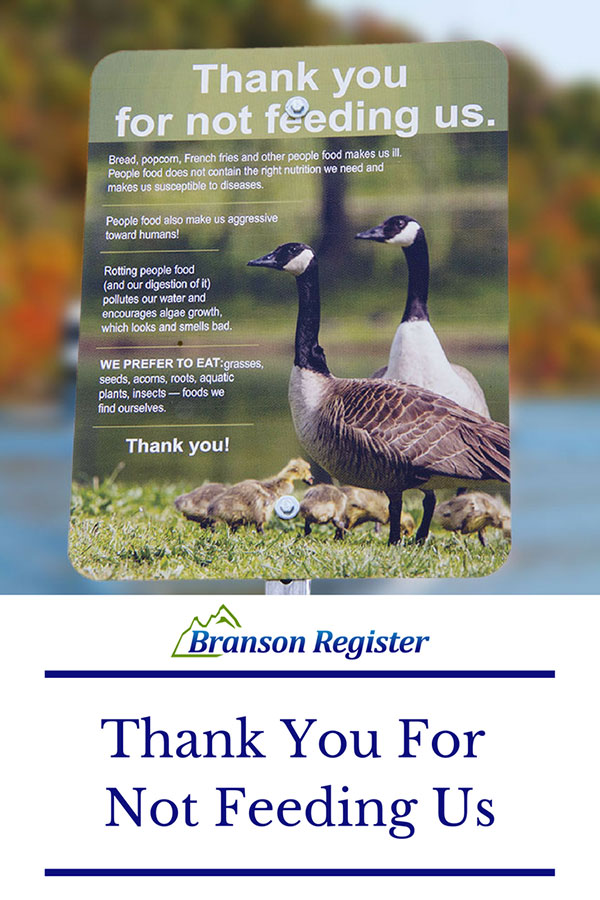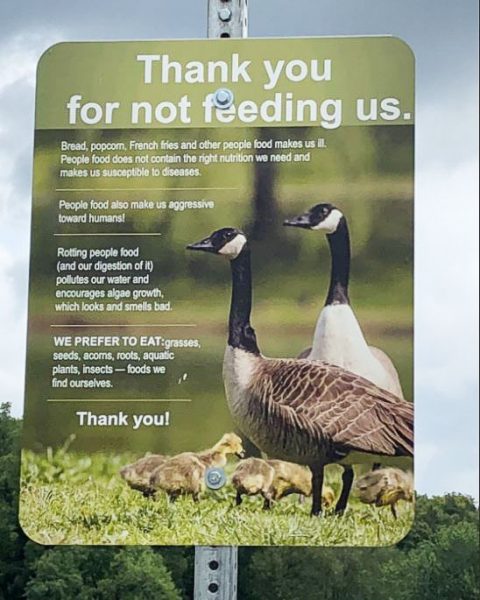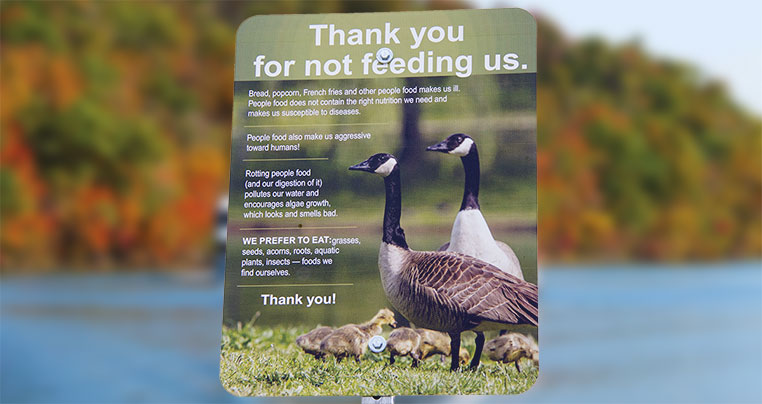

Branson’s lakes are home to all sorts of waterfowl
Its natural beauty, surrounding Ozark Mountains, and Lakes, along with its live shows and attractions, have been drawing millions of visitors to Branson, Missouri for decades. That natural beauty and its it’s working. Not only is there a substantial reduction in the number of geese in the area, but in the amount of their feces that he had to clean off his parking lot each day to keep his customers from walking through it and tracking it into his business. It goes without saying that those same benefits accrue to those who use the road for recreation and the campers in the Campground.. The beautiful Table Rock Lake and Lake Taneycomo, provide excellent fishing for bass and trout; an aquatic wonderland for boating, swimming and water sports; and an excellent habitat for water fowl. So, metamorphically speaking, why would Branson’s waterfowl ask, “”Please don’t feed us!”
Lakes are convenient for migratory water fowl
The Branson area lakes provide a convenient resting and feeding place for migratory water fowl as they follow their natural migration and seasonal patterns. It also provides an excellent home for those migratory water fowl, such as the “Canada Goose,” who decide to stay in the area for prolonged periods of time rather than “travel on.”
Problems with feeding Canada Geese and waterfowl
Isolated individuals and pairs are not a problem, but large numbers of them, congregating in one area near people can cause problems for both the geese and people. That problem multiplies exponentially when they congregate in an area to be fed food they do not normally eat and that area is extremely close to a campground filled with families, such as the city of Branson’s Lakeside RV Park (Campground), located on the shores of Lake Taneycomo just south of Branson Landing.
Waterfowl problems from eating “people food”
The shore line directly in front of the Campground has become the area where people gather to feed the geese and ducks. This attracts large numbers of Canada Geese and other water fowl. The City of Branson and the Missouri Department of Conservation are working together to inform the public, through signage, that the “people food” they are feeding the geese and other water fowl, typically processed bread, French fries, popcorn, etc., while ok for humans, is not in their natural diet. It doesn’t contain the right nutrition, makes them more susceptible to disease, ill, and more aggressive toward people.
Impact lakeshore recreation
The large number of geese being fed and the impact of that on their digestive system has resulted in their feces being spread from the shoreline, across the road and up to the trailers in the Campground. Not only campers, but the many people walking, running, and biking on the road are also exposed to it. In an effort to mitigate the problem, for both the geese and waterfowl, as well the campers and others who enjoy using the lakefront, the City of Branson and the Missouri
Educational signage, “Thank You For Not Feeding Us,” helping to resolve situation
Department of Conservation have erected a number of “Thank You For Not Feeding Us” signs along the Lake Taneycomo shore line in front of the Campground. Lamar Patten, the owner of Scotty’s Trout Dock and Marina, at the south end of the campground, near the public boat launch ramp, says that, thanks to peoples cooperation in not feeding the waterfowl, it’s working. Not only is there a substantial reduction in the number of geese in the area, but in the amount of their feces that he had to clean off his parking lot each day to keep his customers from walking through it and tracking it into his business. A drive down the road between the lake and Campground indicates that those same benefits are accruing to the many people who use the road for recreation and the campers in the Campground.

